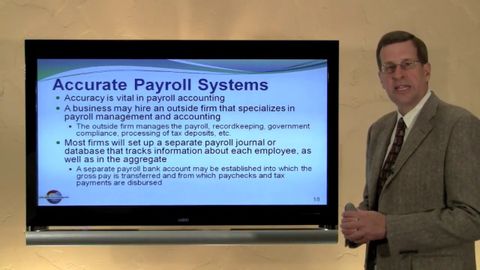
Subtitles & vocabulary
12 - Accounting for Payroll
00
陳虹如 posted on 2017/06/23Save
Video vocabulary
specific
US /spɪˈsɪfɪk/
・
UK /spəˈsɪfɪk/
- Adjective
- Precise; particular; just about that thing
- Concerning one particular thing or kind of thing
A2
More period
US /ˈpɪriəd/
・
UK /ˈpɪəriəd/
- Noun (Countable/Uncountable)
- Set amount of time during which events take place
- A way to emphasize what you will say
A1TOEIC
More gross
US /ɡros/
・
UK /ɡrəʊs/
- Noun (Countable/Uncountable)
- 144 of something; twelve dozen of something
- Total sum of money earned before costs and taxes
- Transitive Verb
- To earn an amount of money before costs and taxes
B1TOEIC
More category
US /ˈkætɪˌɡɔri, -ˌɡori/
・
UK /ˈkætəgəri/
- Noun
- Groups of things that are similar in some way
B1
More Use Energy
Unlock All Vocabulary
Unlock pronunciation, explanations, and filters
